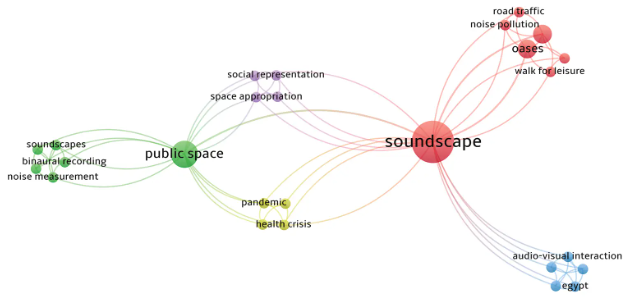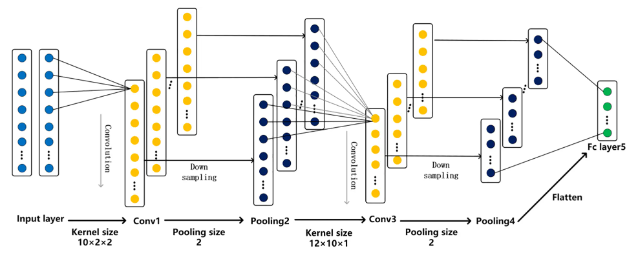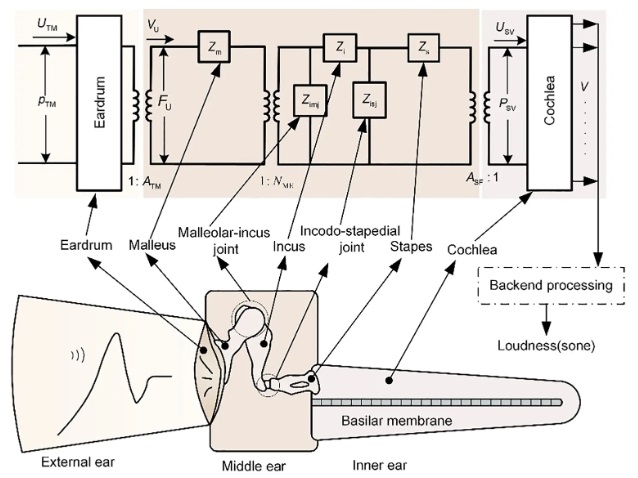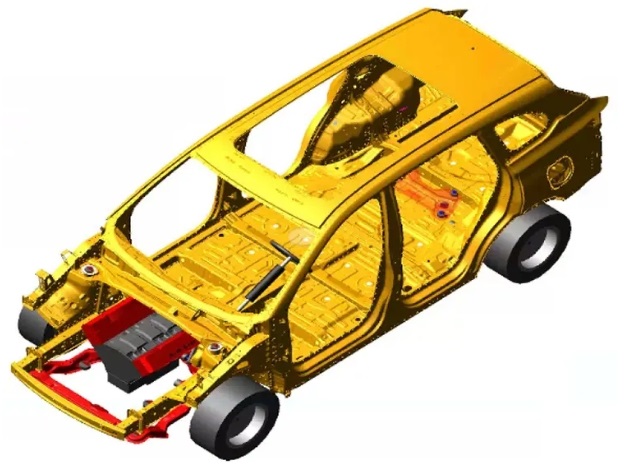Adaptive parameter-optimized NLM algorithm to denoise vibration signals of hydropower units
Abstract
Monitoring and diagnosing the operating state of hydropower units is crucial, which becomes a hot research topic in the industry. the vibration signals provide a reliable indication to detect the abnormal working conditions of hydropower units. however, the vibration signals is affected by the environment noise inevitably, making it difficult to truly reflect the operating state of hydropower units. the non-local means (NLM) algorithm is proved to be effective in denoising the vibration signals, however, whose parameters depend on the human experience, which hinders its application and development. in the present work, based on the Bayesian parameter optimization (BPO), the parameters of NLM are set adaptively, the BPO-NLM denoising algorithm is proposed. by conducting the simulation, the denoising effectiveness of BPO-NLM is improved remarkably than that of the traditional NLM. at different snr, RMSE of the signal denoised by BPO-NLM is much smaller than that of the traditional NLM, while snr of the signal denoised by BPO-NLM is much larger, namely, the effective component of the signal is enhanced, while the noise component is suppressed.
References
[1]Huang H, Qin A, Mao H, et al. The Prediction Method on the Early Failure of Hydropower Units Based on Gaussian Process Regression Driven by Monitoring Data. Applied Sciences. 2020; 11(1): 153. doi: 10.3390/app11010153
[2]Liu Y, Xu Y, Liu J, et al. Real-time comprehensive health status assessment of hydropower units based on multi-source heterogeneous uncertainty information. Measurement. 2023; 216: 112979. doi: 10.1016/j.measurement.2023.112979
[3]Guo W, Wu F. Hydraulic-mechanical coupling vibration performance of pumped storage power station with two turbine units sharing one tunnel. Journal of Energy Storage. 2022; 53: 105082. doi: 10.1016/j.est.2022.105082
[4]Li X, Xu Z, Guo P. Swing Trend Prediction of Main Guide Bearing in Hydropower Units Based on MFS-DCGNN. Sensors. 2024; 24(11): 3551. doi: 10.3390/s24113551
[5]Shen A, Chen Y, Zhou J, et al. Hydraulic Vibration and Possible Exciting Sources Analysis in a Hydropower System. Applied Sciences. 2021; 11(12): 5529. doi: 10.3390/app11125529
[6]Kong F, Song C, Zhuo Y. Vibration Fault Analysis of Hydropower Units Based on Extreme Learning Machine Optimized by Improved Sparrow Search Algorithm. Journal of Vibration Engineering & Technologies. 2022; 11(4): 1609-1622. doi: 10.1007/s42417-022-00660-3
[7]Gemechu E, Kumar A. A review of how life cycle assessment has been used to assess the environmental impacts of hydropower energy. Renewable and Sustainable Energy Reviews. 2022; 167: 112684. doi: 10.1016/j.rser.2022.112684
[8]Xu R, Tan X, Wang H, et al. Stability of hydropower units under full operating conditions considering nonlinear coupling of turbine characteristics. Renewable Energy. 2024; 223: 120009. doi: 10.1016/j.renene.2024.120009
[9]Oppliger J, Denner MM, Küspert J, et al. Weak signal extraction enabled by deep neural network denoising of diffraction data. Nature Machine Intelligence. 2024; 6(2): 180-186. doi: 10.1038/s42256-024-00790-1
[10]Chen C, Chen Z, Zhou Y, et al. A reliable evaluation approach for multichannel signal denoising algorithms based on a novel arterial pulse acquisition system. Heliyon. 2024; 10(5): e26140. doi: 10.1016/j.heliyon.2024.e26140
[11]Sahoo GR, Freed JH, Srivastava M. Optimal Wavelet Selection for Signal Denoising. IEEE Access. 2024; 12: 45369-45380. doi: 10.1109/access.2024.3377664
[12]Wei M, Sun X, Zong J. Time–Frequency Domain Seismic Signal Denoising Based on Generative Adversarial Networks. Applied Sciences. 2024; 14(11): 4496. doi: 10.3390/app14114496
[13]Bai Y, Chen Z, Xie J, et al. Daily reservoir inflow forecasting using multiscale deep feature learning with hybrid models. Journal of Hydrology. 2016; 532: 193-206. doi: 10.1016/j.jhydrol.2015.11.011
[14]Yu X, Zhang X, Qin H. A data-driven model based on Fourier transform and support vector regression for monthly reservoir inflow forecasting. Journal of Hydro-environment Research. 2018; 18: 12-24. doi: 10.1016/j.jher.2017.10.005
[15]Ashraf FB, Haghighi AT, Riml J, et al. A Method for Assessment of Sub‐Daily Flow Alterations Using Wavelet Analysis for Regulated Rivers. Water Resources Research. 2021; 58(1). doi: 10.1029/2021wr030421
[16]Guo W, He N, Ban X, et al. Multi-scale variability of hydrothermal regime based on wavelet analysis—The middle reaches of the Yangtze River, China. Science of The Total Environment. 2022; 841: 156598. doi: 10.1016/j.scitotenv.2022.156598
[17]Darbon J, Cunha A, Chan T. From nano to macro. In: Proceedings of the 5th IEEE international symposium on biomedical imaging; 14–17 May 2008; Paris, France.
[18]Tracey BH, Miller EL. Nonlocal Means Denoising of ECG Signals. IEEE Transactions on Biomedical Engineering. 2012; 59(9): 2383-2386. doi: 10.1109/tbme.2012.2208964
[19]Lv Y, Zhu Q, Yuan R. Fault Diagnosis of Rolling Bearing Based on Fast Nonlocal Means and Envelop Spectrum. Sensors. 2015; 15(1): 1182-1198. doi: 10.3390/s150101182
[20]Lv Y, Yuan R, Song G. Multivariate empirical mode decomposition and its application to fault diagnosis of rolling bearing. Mechanical Systems and Signal Processing. 2016; 81: 219-234. doi: 10.1016/j.ymssp.2016.03.010
[21]Van M, Kang H, Shin K. Rolling element bearing fault diagnosis based on non‐local means de‐noising and empirical mode decomposition. IET Science, Measurement & Technology. 2014; 8(6): 571-578. doi: 10.1049/iet-smt.2014.0023
[22]Van M, Kang H. Bearing‐fault diagnosis using non‐local means algorithm and empirical mode decomposition‐based feature extraction and two‐stage feature selection. IET Science, Measurement & Technology. 2015; 9(6): 671-680. doi: 10.1049/iet-smt.2014.0228
[23]Laha SK. Enhancement of fault diagnosis of rolling element bearing using maximum kurtosis fast nonlocal means denoising. Measurement. 2017; 100: 157-163. doi: 10.1016/j.measurement.2016.12.058
[24]Bing P, Liu W, Wang Z, et al. Noise Reduction in ECG Signal Using an Effective Hybrid Scheme. IEEE Access. 2020; 8: 160790-160801. doi: 10.1109/access.2020.3021068
[25]Guo Z, Wan Y, Ye H. An Unsupervised Fault-Detection Method for Railway Turnouts. IEEE Transactions on Instrumentation and Measurement. 2020; 69(11): 8881-8901. doi: 10.1109/tim.2020.2998863
[26]Zhang X. Two-step non-local means method for image denoising. Multidimensional Systems and Signal Processing. 2021; 33(2): 341-366. doi: 10.1007/s11045-021-00802-y
[27]Wei Z, Wang Y, He S, et al. A novel intelligent method for bearing fault diagnosis based on affinity propagation clustering and adaptive feature selection. Knowledge-Based Systems. 2017; 116: 1-12. doi: 10.1016/j.knosys.2016.10.022
[28]Lu Z, Xiao JW, Huang Z. Metric Learning Based Rolling Bearing Faults Diagnosis with Curvelet Transform. Journal of Physics: Conference Series. 2019; 1229(1): 012037. doi: 10.1088/1742-6596/1229/1/012037
[29]Snoek J, Larochelle H, Adams R. Practical Bayesian optimization of machine learning algorithms. Advances in Neural Information Processing Systems; 2012. pp. 2951-2959.
[30]Dwyer R. Detection of non-Gaussian signals by frequency domain Kurtosis estimation. ICASSP ’83 IEEE International Conference on Acoustics, Speech, and Signal Processing. 1983; 8: 607-610. doi: 10.1109/icassp.1983.1172264
[31]Antoni J, Randall RB. The spectral kurtosis: application to the vibratory surveillance and diagnostics of rotating machines. Mechanical Systems and Signal Processing. 2006; 20(2): 308-331. doi: 10.1016/j.ymssp.2004.09.002
[32]An X, Yang J. A method of eliminating the vibration signal noise of hydropower unit based on NA-MEMD and approximate entropy. Proceedings of the Institution of Mechanical Engineers, Part E: Journal of Process Mechanical Engineering. 2016; 231(2): 317-328. doi: 10.1177/0954408915595763
Copyright (c) 2024 Xiang Wu, Zhibo Jiang, Renbo Tang, Yun Luo, Kefei Zhang

This work is licensed under a Creative Commons Attribution 4.0 International License.









